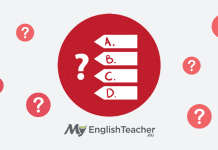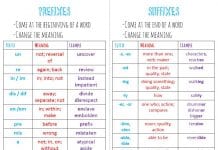Connectors are words that connect ideas, thoughts, and chapters together in a text. They strengthen your argument by giving readers extra context.
Aussi (also, as well, likewise, moreover, in addition)
Aussi (also) is used when you want to highlight a word or phrase that follows.
Example “The boy wore an orange shirt today” or “The boy wore an orange shirt today as well!” (In French: “Le garçon portait une chemise orange aujourd’hui” et “Le garçon a porté une chemise orange aujourd’hui aussi !”.)
En outre (furthermore)
En outre (furthermore) is a French phrase that can be used to add something to what you have just said. Most commonly, it means “besides, in addition, beyond, despite, apart, other than”.
Example sentence: La lecture est un excellent moyen d’améliorer votre vocabulaire. En outre, elle vous aide également à améliorer vos compétences grammaticales. (Reading is a great way to improve your vocabulary, furthermore it also helps you improve your grammar skills.)
De plus (furthermore, also)
The French word de plus, which literally means “furthermore,” is used to expand on a thought or idea. Most often, it is used to express the following:
- It’s a great method to provide more context for what you’re saying and provide credibility to your statements. For example, to talk about how much has been spent on advertising campaigns for a new product, you might say something like: “De plus, les recettes publicitaires ont augmenté de 50% ces dernières années.” (In addition, advertising revenues have increased by 50% in recent years.”)
Comme (like, as)
The word comme may be used to indicate similarities in the following contexts:
- The adverbial phrase “comme” (like, as) is used to underline the similarities between two objects. For example, “Les étoiles brillaient comme des diamants.” (The stars shone like diamonds).
- Comme (like, as) is used to describe similarities between things or persons that aren’t identical. Examples: “Leur chien est comme eux” (Their dog is just like them). “Il a décidé de devenir pilote comme son père.” (He decided to become a pilot like his father.
Donc (so, therefore)
Donc is used to say “so” and “therefore“.
- Example: “Les outils sont rouillés et doivent donc être changés.” (The tools are rusted and must therefore be changed.), “Ma sœur sait coudre, donc elle fait ses propres vêtements.” (My sister can sew, therefore she makes her own clothes.)
Ensuite (then)
The French word “then” (Ensuite) may be used as a bridge between two points in time. For example:
“Je vais à la bibliothèque et ensuite je mange un sandwich au fromage.” (I go to the library and then I eat a cheese sandwich.) “Nous sommes descendus au métro et ensuite nous avons pris le bus pour rentrer à la maison.” (We got off at the metro and then took the bus home.).
De plus en plus (more and more)
Using de plus en plus, you may say that something is improving or growing over time. I’ll give you an example:
- Je suis grosse, j’ai pris de plus en plus de poids au cours des 1 dernières années. (I am fat, I got more and more weight in the past 1 year.)
Tandis que (while, whereas)
Tandis que (while, whereas) is used to introduce a contrast. Like “whereas” in English, it’s used to contrast two things or introduce a new thought.
For example: “Tandis que je suis en ville, je fais du sport tous les jours.” (While I’m in town, I work out every day.)
“Mon frère est devenu ingénieur, tandis que je suis devenu chanteur.” (My brother became an engineer, whereas I became a singer.)
Connect French statements using these connectors
Connectors in French are used to help speech flow more smoothly. Ideas may be more easily connected and expressed when you use connectors, and your audience will pick up on what you wish to say as a result.


























